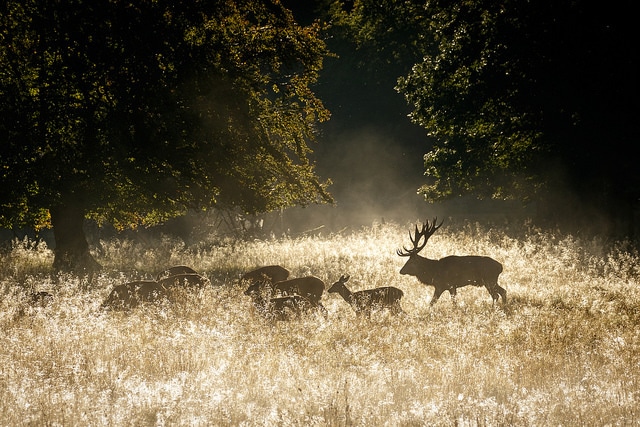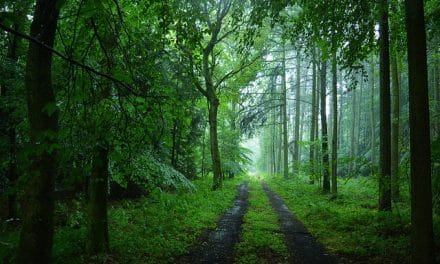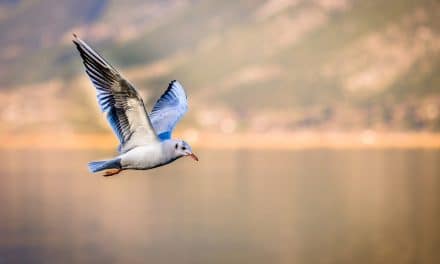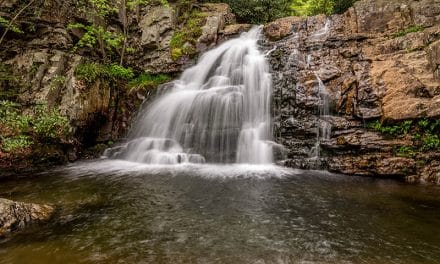While images of wildlife safaris or jungle treks may come to mind when you think of wildlife photography, for landscape photographers –there are plenty of opportunities for wildlife a lot closer to home as well!
When it comes to landscape photography, wildlife can be a great way to add some extra interest and life to your photos –transforming what could easily be a dull and uninspiring image into an exciting and dramatic shot.
Of course –finding wildlife, and capturing them effectively, isn’t always the easiest task. Wild animals are unpredictable, not to mention –potentially dangerous, and you have to be alert and on your toes when you’re out stalking them! Another issue when photographing wildlife –is their speed. Birds flit in and out of a photo frame, butterflies dance through the air, and larger creatures –like deer, tend to move quickly as well. Photographing these creatures –freezing a moment in time, isn’t always easy –but it’s a challenge that can pay off tremendously when you capture that winning shot!
If you’re looking for ideas for photographing wild animals or including wildlife in your landscape images, here’s a look at a few tips that will help to get you started.
→ Related reading: Bring Out the Wild in Wildlife Photography
1. Become Familiar With Your Subjects
Having a keen understanding of the type of animal that you’re trying to photograph will give you a tremendous advantage when it comes to capturing them. Being familiar with the animal –and its habits will help you to anticipate their moves, as much as possible, allowing you to frame your image for the best results. It will also help you when it comes to locating the animal in the first place –you’ll have a better idea where to look, and when to go.
2. Know Your Gear
Before you head out –make sure you pack lenses that you’re familiar with –ones that you know how to use! You’ll also want to have a good understanding of your camera settings, and the exposure triangle. It may sound overly obvious, but when you’re out in the field, you may only have a brief moment to capture your subjects –and the last thing you’ll want to be doing is fiddling around trying to adjust your camera settings! With this in mind, make sure you bring the right gear. Generally, you’ll want to bring a telephoto lens, for getting up close to the action. In most cases, a 400mm lens will be a good option, but if you’re planning to capture birds or other flighty creatures, you may even want to go with a lens with an even longer focal length.
→ Related reading: Reviews of the Best Telephoto Lenses for Canon DSLRs and Reviews of the Best Telephoto Lenses for Nikon DSLRs.
3. Consider Shooting in Aperture Priority Mode
When capturing your wildlife images –keep your fingers ready! Chances are you’re going to have to work quickly to get the image that you’re after. In most cases, you’ll want to use aperture priority mode when shooting wildlife. This is because light often varies considerably in woodlands or similar environments, and working in aperture will make it easier for you to capture a series of photos of an animal walking across your path, while allowing the camera to adjust the settings to ensure that your images are properly exposed.
You could also try working with shutter priority mode –especially if you’re capturing fast-moving animals. Running animals can usually be captured with shutter speeds that are between 1/1000 to 1/1250 –while flying birds may require shutter speeds of anywhere between 1/1600 and 1/2500, and even faster. While working in manual offers some benefits for certain compositions, it also requires a lot of switching –which could put you at risk of missing out on some winning shots!
4. Think About Your Composition
If you’re hoping to capture unique wildlife images –you’ll want to think about your shots before you take them. Consider your angle, and whether there’s a more effective way to photograph your subject. Some compositions may benefit from you zooming in closer to the animal itself, but in many cases, including some of the surrounding area can help to add context to your image.
Similarly, sometimes getting lower to the ground and including some foreground can help add depth to an otherwise-flat composition. You’ll also want to determine whether you should position the subject in the middle of the frame –or if the rule of thirds is in order. While time is of the essence with wildlife photography; taking a split second to think about the layout will help you to create stronger compositions.
5. Work With Available Lighting
Most of the time you’ll be relying solely on the natural lighting with your wildlife images –and you’ll want to make the most of it! In many cases, you’ll want to head out in the early morning, or evening –since this is the time of day where most animals are active. The lighting will also be at its best during this time of day, providing a great opportunity for truly breathtaking images. You may even get the chance to capture some beautiful backlighting –that illuminates your subject from behind.
6. Look for Opportunities
Finally, you don’t have to venture to Africa to capture some amazing wildlife images –although, you certainly could –of course! Keep in mind that there are opportunities right in your own backyard. Even common animals –such as pigeons, ducks, squirrels, or even insects can all make great subjects –as long as the composition is strong. Be ready to capture them during that brief moment when they’re doing something exciting, freezing them in action.
While wildlife photography can be extremely exciting –remember to keep safety in mind when you’re out and about! Never get too close to the animals –and avoid anything that could frighten them or cause them to become agitated or stressed. This applies to larger, more dangerous animals –and smaller ones as well. Some creatures, such as birds, may abandon their nests if they feel threatened, so always try to keep your distance when photographing them.
With wildlife photography, remember, patience isn’t just a good idea –it’s a requirement. Capturing great images takes time, diligence, and many failed attempts. Each time you try, though, you’ll be a little bit more familiar with the animal, your camera settings, and gear. Eventually, you’ll be able to use your experience and accumulation of knowledge to capture some exciting images –ones that truly take your breath away!
Have you ever done wildlife photography? Share your thoughts with us in the comments!
Photo license link: CC BY 2.0


















Amazing Pictures! Really learn a lot of information from your post thanks for sharing.